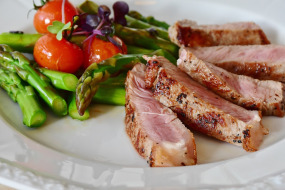Navigating the World of Non-GMO and Organic Foods: A Guide to Healthier Eating Choices
Introduction In today’s complex food landscape, making healthy choices can seem daunting. Many consumers strive to avoid genetically modified organisms (GMOs) due to concerns over environmental impacts, health risks, and the desire to consume foods that are perceived as more natural. Simultaneously, there is a growing demand for organic foods, which are often valued for their stricter farming and production standards that avoid synthetic pesticides and fertilizers.
Here’s a comprehensive guide on how to sidestep GMOs and opt for organic foods, enhancing both health and environmental sustainability.
Understanding GMOs Genetically modified organisms are plants, animals, or microorganisms whose genetic material has been altered in a way that does not occur naturally by mating and/or natural recombination. Common genetically modified foods include some types of corn, soybeans, and canola. These modifications are often made to improve crop resistance to pests and herbicides. However, the long-term health effects of consuming GMO foods are still a subject of research and debate.
Identifying Non-GMO Products
Look for Labels: The most straightforward way to avoid GMOs is to look for labels specifically stating that a product is non-GMO. In many countries, including the United States, products certified by the Non-GMO Project carry a label indicating they are non-GMO.
Buy Organic: Organic standards prohibit the use of genetic modification. By choosing products that are certified organic, you not only avoid GMOs but also support practices that are better for the environment.
Know the Most Common GMOs: Familiarize yourself with the crops that are commonly genetically modified, such as corn, soybeans, canola, and sugar beets. Being aware of these can help you make more informed choices, especially when these ingredients are prevalent in processed foods.
Choosing Organic Foods
Understand Organic Certification: Organic foods are grown without synthetic pesticides, herbicides, and fertilizers. They also avoid the use of artificial food additives. In the U.S., the USDA Organic certification ensures that food products meet strict government standards.
Shop Local: Buying from local farmers markets can be an excellent way to find fresh, organic produce. It also provides an opportunity to speak directly with farmers about their methods. Many small farms use organic methods but may not be certified due to the cost of certification.
Grow Your Own: If space and resources allow, growing your own food can be a fulfilling way to ensure you are eating fresh and organically. Even small spaces can yield a significant amount of produce, from herbs grown on windowsills to vegetables in backyard gardens.
Reading Labels Labels can be confusing. Here’s what to look for when shopping:
Organic Certification: This label is your best assurance that a product is free from synthetic additives and GMOs.
Ingredient Lists: The fewer the ingredients, the better. More ingredients generally mean more processing, which increases the likelihood of GMO components.
Plu Codes: In many supermarkets, fruits and vegetables have stickers with PLU codes. Organic products are usually identified by a five-digit number beginning with 9.
Conclusion Avoiding GMOs and choosing organic foods are strategies that can lead to healthier lifestyles and a healthier planet. By being vigilant about reading labels, understanding where and how your food is produced, and even taking part in growing your own food, you can take significant steps towards consuming a more natural and sustainable diet.







